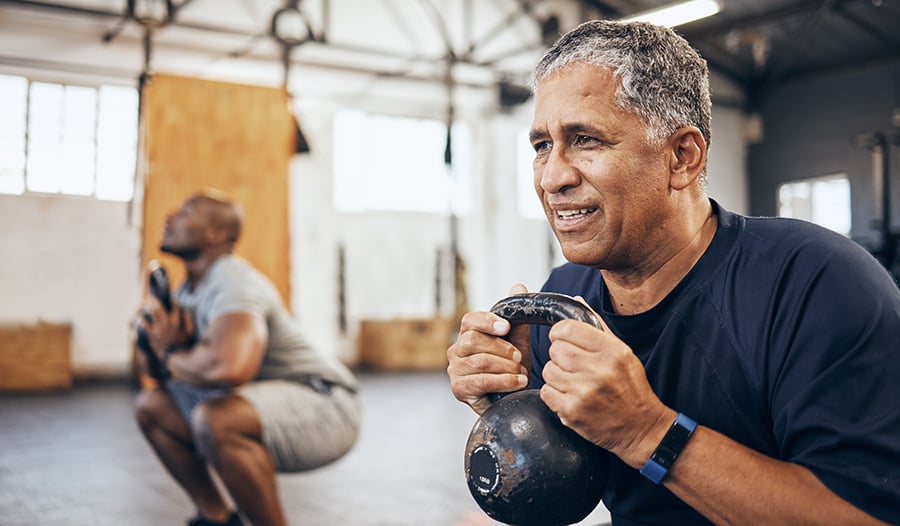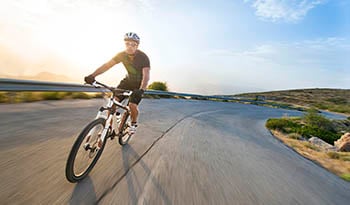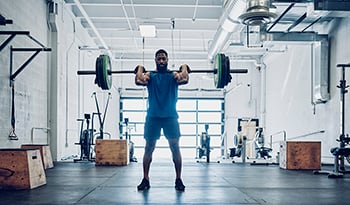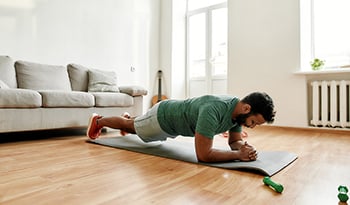More Movement May Increase Longevity—Here’s Why
DISCLAIMER:This blog does not intend to provide diagnosis...
- In this article:
- Why Is It So Hard to Get Moving?
- How to Get Moving—And Love It!
- Foods for Inflammation
- Supplements That Support Movement
- Takeaway

The human body is built to move—and thrives when you are able to use your muscles, bones, tendons, and other bodily tissues to make grand gestures and micro-movements.
Just as an ocean without tides and waves would become nothing but a stagnant pool of water, a body without its own daily ebb and flow of activity is stagnant. You both damage your day-to-day quality of life and shorten your life span.
Unfortunately, more than 25% of American adults are sedentary, and only around 47% get the minimum suggested weekly activity of 150 minutes of moderate exercise and two days of strength-building a week.
Why Is It So Hard to Get Moving?
Joint pain, lower back problems, muscle weakness, fragile bones, depression, chronic stress, obesity, and overwork (on the job and at home) can make it difficult to move easily, enjoy exercise, or find the time to do something good for yourself. And the less you do, the harder it is to get going. You really do need to use it, or you’ll lose it.
Fortunately, there are simple ways to get moving and foods and supplements that can power you as you step into a healthier, happier, longer life. Once you begin to move more, your spirits will lift, along with your glutes.
How to Get Moving—And Love It!
You can get moving with a few simple activities: I recommend walking down stairs so slowly that your thighs become tired; do it at least once a day. Increase over time until you can comfortably do five or more flights. (This is great to do at lunchtime in your office—you can take the elevator back up until you get stronger).
You also want to stretch your hips and hamstrings daily to improve balance and agility and ease hip, leg, and lower back discomfort. I recommend stretching first thing in the morning—it will start your day right. The bonus: 10 minutes of stretching helps keep your arteries healthy and supple, supporting your heart health.
Foods for Inflammation
You can make it easier to be physically active by choosing foods that help control inflammation, promote healthy muscles and bones, and help the body make collagen to cushion your joints and muscles when you exercise.
The Arthritis Foundation says broccoli, Brussels sprouts, cauliflower and cabbage, fatty fish like salmon that are rich in omega-3s, and foods with lots of vitamin C, such as citrus fruit, strawberries, bell peppers, parsley, broccoli, kiwi, and cantaloupe, may ease joint inflammation. Garlic, onions, leeks, and shallots may have some effect on limiting cartilage-damaging enzymes. They also suggest taking a supplement derived from turmeric (better than the often-contaminated turmeric sold as a spice).
Supplements That Support Movement
In addition to doing stretches to increase your agility and reduce discomfort, there are supplements that promote mobility by increasing bone and muscle health and reducing body-wide inflammation. These are often sold together in combined products.
Hyaluronic Acid
Hyaluronic Acid (HA) helps cushion your joints and build cartilage, but as you age, it disappears. Some experts say 70-year-olds have lost 80% of the HA they had in their body when they were young. For more information on HA’s joint-friendly powers, check “Support Your Joints.”
Glucosamine
Glucosamine (the sulfate form) helps protect your joints and cartilage from wear and tear and reduces inflammation. Some studies also show it may support heart health. (You move better with a healthy heart.) For more info, check out Glucosamine: Benefits, Forms, Joint Health, And More.
Vitamin D3 & K
Vitamins D3 and K taken together promote stronger bones—essential for easy motion. (Since vitamin K affects blood clotting, always check with your doctor first before taking it.) Vitamin D ensures proper uptake of calcium--without enough vitamin D, the body absorbs no more than 10% to 15% of dietary calcium. Vitamin K helps the calcium ends up in your bones, not in your arteries.
Takeaway
Experiment with these suggestions for increasing your daily activity level—try one or more at a time and see what sticks. You will be amazed at how much better you feel when you are able to be more active.
References:
- https://www.ncbi.nlm.nih.gov/pmc/articles/PMC6309909/ and https://www.mdpi.com/2227-9032/11/7/1020
- https://www.health.harvard.edu/blog/too-much-sitting-linked-to-an-early-death-201401297004
- https://www.cdc.gov/mmwr/volumes/72/wr/mm7204a1.htm
- https://link.springer.com/article/10.1007/s00403-017-1723-6
- https://www.mayoclinicproceedings.org/article/S0025-6196(23)00302-6/fulltext#back-bib6
- https://www.ncbi.nlm.nih.gov/pmc/articles/PMC2669834
- https://blog.encompasshealth.com/2019/08/28/calcium-without-k2-is-a-heartbreaker/

 By Dr. Mehmet Oz, M.D.
By Dr. Mehmet Oz, M.D. 


